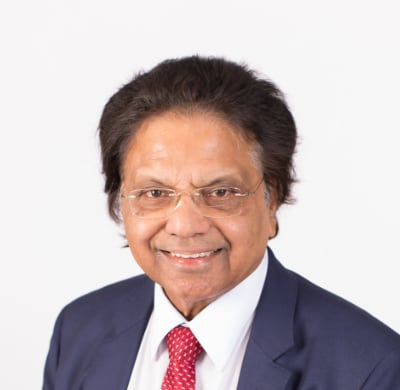Areas of Pain Expertise
Dr David Manohar and his team offer a wide range of services that can assist patients with all there pain needs.
There are two well-recognised broad categories of pain
Pain from damage (trauma)
the common sort of pain
Pain from damage to the pain system itself
the nervous system
These two broad categories of pain can be expanded into the following mechanisms of pain
Nociceptive pain: pain is caused by stimulation of sensory nerve fibres that respond to stimuli approaching or exceeding harmful intensity (nociceptors) and may be classified according to the mode of noxious stimulation. The most common categories are “thermal” (eg: heat or cold), “mechanical” (eg: crushing, tearing, shearing, etc) and “chemical” (eg: iodine in a cut or chemicals released during inflammation). Some nociceptors respond to more than one of these modalities and are consequently designated polymodal. Nociceptive pain typically changes with movement, position and load.
Common Examples:
- Osteoarthritis
- Ankle sprain
- Rheumatoid arthritis
Neuropathic pain: pain that arises from damage to the nervous system itself, central or peripheral, either from disease, injury, or physical irritation. The simplest neuropathies are mechanical insults, like hitting your funny bone or sciatica, but this is a big category: anything that damages neurons, from multiple sclerosis to chemotherapy to alcoholism to phantom limb pain. It’s often stabbing, electrical, itching or burning. Unfortunately, it’s also more likely to lead to chronic pain as nerves don’t heal well.
Common Examples:
- Diabetic neuropathy
- Carpal tunnel syndrome
- Complex regional pain syndrome
Nociplastic pain: pain which is mechanically different from the normal nociceptive pain, which caused by inflammation and tissue damage or the neuropathic pain, which results from nerve damage. It may occur in combination with the other types of pain or in isolation. Its location may be generalised or multifocal and it can be more intense than would be expected from any associated physical cause. Its causes are not fully understood but it is thought to be a dysfunction of the central nervous system whose processing of pain signals may have become distorted or sensitised.
Common Examples:
- Fibromyalgia
- Temporomandibular disorder
- Nonspecific low back pain
Psychogentic pain: pain that is caused, increased or prolonged by mental, emotional or behavioural factors. Sufferers are often stigmatised because they struggle to convince their medical practitioner or family member that pain emanating from a psychological can be a “real” source. However, pain specialists consider that it is no less real, or painful, than pain from any other source.
Common Examples:
- Headache
- Back pain
- Muscle pains
- Stomach pain
Classifying Pain
Timing of Pain
Chronic
Lasting > 3 months
Intermittent
Episodic Pain
Acute
Lasting < 3 months
Breakthrough
Due to waring off of medication
Incident
Caused by activity
Spontaneous
Fleeting neuropathic pain
Location of Pain
Nociceptive (Somatic):
Musculoskeletal
Nociceptive (Visceral):
Internal organs
Nociplastic
Central nervous system
Neuropathic
Functional
Incident
Diabetic neuropathy, fibromyalgia
Functional
No known cause
Psychosomatic
Fibromyalgia

30+ years of clinical experience
Dr Manohar specialises in diagnosing, treating and managing all mechanisms of pain and has 30+ years of clinical experience.
He offers 30+ years of experience in treating musculoskeletal conditions, such as spine and nerve pain, and joint-related orthopaedic conditions that cause chronic pain.
He holds dual-specialist registration as both a pain physician as well as a rehabilitation medicine physician giving him a unique perspective on pain medicine.
My Clinical Areas of Expertise
Reginal Pain
- Spinal Pain
- Neck Pain (Cervical Spinal Pain)
- Upper Back (Thoracic Spinal Pain)
- Lower Back (Lumbar Spinal Pain)
- Prolapsed Disc (Sciatica)
- Spinal Stenosis
- Sacroiliac Joint Pain & Dysfunction
- Coccygeal Pain
- Joint Pain (Osteoarthritis)
- Shoulder Pain
- Hip Pain
- Knee Pain
- Ankle Pain
- Nociplastic Pain Syndromes
- Tissue Damage
- Inflammation
- Facial Pain
Reginal Pain
- Brachial Plexopathy
- Post Herpetic Neuralgia (Post Shingles)
- Painful Neuropathies (eg: Diabetic Neuropathies)
- Occipital Neuralgia
- Trigeminal Neuralgia
- Pudendal Neuralgia
- Meralgia Paresthetica
- Ilioinguinal, Iliohypogastric and Genitofemoral Neuralgia
- Post-Surgical pain syndromes
- Post-Hernia pain
- Post-Mastectomy pain
- Post-Thoracotomy pain
- Post-Amputation Pain
- Phantom Pains
- Failed Back Surgery Syndromes or Post Laminectomy Pain Syndromes
Pain Syndromes
- Complex Regional Pain Syndromes (CRPS)
- Fibromyalgia
- Myofascial Pain Syndromes
- Abdominal Wall Pain Syndromes
- Functional Abdominal Pain Syndromes
- Pelvic Pain Syndromes
- Non-Cardiogenic Angina (Refractory Angina)
- Piriformis Syndrome
- Psoas Syndrome
Cancer Pain
- Regional Pain
- Neuropathic Pain Syndromes
- Metastatic Bone Pain


